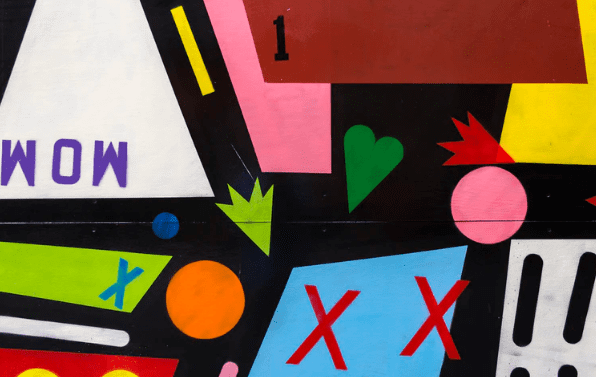UI/UX Trends for eCommerce Startups in 2020
E-Commerce & Retail | Dec 19, 2019
E-commerce has grown in leaps and bounds in recent years. People enjoy purchasing items and goods on the internet whether it be physical or non-physical products. The ease of shopping online is unparalleled because of the beauty, functionality, and sophistication of eCommerce stores.
E-commerce is the future and taking into consideration the UI / UX trends will take your website further and promise better engagement for consumers.
The fundamentals of good user experience don’t dramatically change year after year. However, the standard for UX in 2020 for e-commerce sites have become slicker and more sophisticated. It is also important to note that some significant technological advancements and changes are bound to become integrated into the UX/UI experience like chatbots and voice commands.
The year 2020 may just be a year of monumental changes for UX/UI in e-commerce that websites and business owners should be aware of.

Image by Rahul Yadav From Pixabay
Check the Top UX Trends and UI Design Trends for eCommerce Startups, 2020
UI/UX Trend 1: Chatbots for Better Growth
Artificial Intelligence via Chatbots provide can provide useful services and innovations for e-commerce websites. Chatbots just may become the norm in the future as an increasingly popular addition to any site and helping user interaction.
The social media giant, Facebook, was one of the pioneers of using chatbots having opened up Messenger to bots. The number of chatbots has soared. In 2016, there were 30,000 bots and today there are over 300,000.
The year of 2019 promises that the sophisticated technology of chatbots will become integrated more fully into site design and will move away from simply providing customer service, and will create web interactions that will help drive sales. Web analytics can analyze user engagement and retention capabilities of chatbots.
Chatbots in e-commerce sites will know exactly what a customer wants by analyzing previous histories, interactions, and behaviors.
UI/UX Trend 2: Use of Shadows and Depth
The buttons and objects on your website need to conform to shadow and depth to show realism and to give the appearance of a 3D effect. This is important for the user because components that appear raised in an interface are perceived to be clickable especially beveled ones.
Every UI must have depth and perception even though digital user interfaces is two dimensional. It is important to make these effects depth and shadow more realistic. Depth and shadow haven’t gone out of style because it is the best way to simulating the real world.
Shadows in the UI must not be conspicuous or even noticeable because that is just how it is in the real world. These effects are subtle and the shadow and depth in the UI must mimic this.
UI/UX Trend 3: Experimental Palettes and Layouts
The colors palettes and layouts of your e-commerce website is the first thing that will attract users to your site. There are several design rules and suggestions you should consider when making your final choice.

Photo by Cris DiNoto on Unsplash
Choose From Those Design Rules to Get the Best Color Schemes for eCommerce Websites:
The 60–30–10 rule
Colors should be combined in a proportion of 60%-30%-10% with the biggest part going to the dominant hue. A third of the composition should go to the secondary color and the remaining 10% should be for the accents. This kind of combination is pleasant to the human eye and keeps the UI design from looking unbalanced.
Contrast
Color contrast is an important part of the overall effect of the UI. Contrast depends on the goals it is supposed to accomplish. If the goal is for users to pay attention to specific UI elements it is a good idea to use contrasting colors such as blue and red.
Psychology of Colors
Color psychology helps in designing colors appropriate for the UI/UX interface since colors have innate meanings which predict the human response to them. Color affects mood and behavior and this has been extensively used in color psychology. The mind reacts to the colors and influences behavior without people noticing it. Consider the different meanings of colors and their effects when choosing colors for your UI.
Cultural Differences
Each culture will have a different interpretation of colors based on their tradition and belief. Before choosing your palette, consider the significance of the color in culture to avoid misunderstandings.
Related Guide: How to Create Great Visual Experiences Anywhere
UI/UX Trend 4: Functionality over Beautification
There was a time when websites had all the bells and whistles that seem to offer sensory overload. However, those days of mind-blowing design are long past and seem to be outdated with current trends. Complex graphics used to be a big thing but it is not as popular now.
People now veer towards well-made, uncluttered minimalistic projects. It is not about being trendy but about being functional. Although intricate UI certainly looks great, when it comes to e-commerce website standards are different.
Having a website with great visual impact is certainly essential to make users stop and stare but there are a lot of other elements at stake. An e-commerce website needs improved navigation, secure authentication, and good content.
When you choose a minimalist design you save your time, money, and effort for the more important things.
Conclusion
The UX/UI of a website is necessary for creating an impact and delivering the message and vision of the company in the digital age. The e-commerce website interface serves as the physical place where consumer interactions take place and it must be up to date with trends and tasteful in design.
There is a wide range of considerations in making the perfect UX / UI design so e-commerce companies should always be aware and apply the necessary changes to give the best user experience.
Warning: Undefined array key "sidebar_ads" in /home/dmc/public_html/wp-content/themes/DMC/functions/helpers.php on line 824





